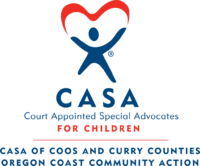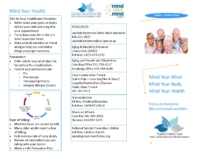CASA of Del Norte will support and assist children in the juvenile dependency program by providing well-trained volunteers to advocate objectively in the child’s best interest.
What you need to know
Last year over 120,000 of California’s children were removed from their homes and placed in the foster care system because they had been abused, neglected or abandoned. These children constitute one fifth of all the children in foster care across the nation.
A Court Appointed Special Advocate (CASA) is a trained volunteer, a community member who is appointed by a judge to speak for a child that has been removed from home and made a dependent of the juvenile court. CASA volunteers are generally assigned to one child or sibling group to provide an in-depth and independent investigation of the child’s circumstances, to ensure that court-ordered services are provided, and to advocate for the child’s needs. In 2002, over 4,864 California CASA volunteers donated 643,000 hours to serve more than 8,697 court-dependent children.
Currently, CASA programs in California work with approximately 7% of the children in the state’s child welfare system. The vision of the California Child Welfare System is: Every child in California lives in a safe, stable, permanent home nurtured by healthy families and strong communities.
Today in California 43 of the 58 counties are being served by 41 CASA programs. Each program works on behalf of children who are in the juvenile dependency court system through no fault of their own. Each CASA program must manage to balance the needs of the child with the opportunities and resources of their local area.
CASA volunteers are every day extraordinary citizens who have made a commitment to make a difference in the life of a child. They are awesome people who support and encourage the child throughout the court process, they explain the court proceedings to the child, they build and establish a relationship with the child to better understand the needs and desires of the child, they review records pertaining to the family history, medical history, school behavior and use the information gathered to better give the child a voice.

























